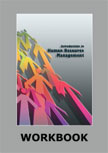Succession Planning at Ranbaxy - Family Drama, Corporate Style
|
|
ICMR HOME | Case Studies Collection
Case Details:
Case Code : HROB057
Case Length : 18 Pages
Period : 2000-2004
Pub Date : 2004
Teaching Note :Not Available
Organization : Ranbaxy
Industry : Pharmaceuticals
Countries : India
To download Succession Planning at Ranbaxy - Family Drama, Corporate Style case study
(Case Code: HROB057) click on the button below, and select the case from the list of available cases:

Price:
For delivery in electronic format: Rs. 500;
For delivery through courier (within India): Rs. 500 + Rs. 25 for Shipping & Handling Charges
»
Human Resource, Organization Behavior Case Studies
» HRM Short Case Studies
» View Detailed Pricing Info
» How To Order This Case
» Business Case Studies
» Area Specific Case Studies
» Industry Wise Case Studies
» Company Wise Case Studies

Please note:
This case study was compiled from published sources, and is intended to be used as a basis for class discussion. It is not intended to illustrate either effective or ineffective handling of a management situation. Nor is it a primary information source.
Chat with us

Please leave your feedback

|
|




<< Previous
Excerpts
Family Owned Businesses & Succession Planning
|
The importance of succession planning is vital to the success and survival of
family-owned businesses. Ideally, in a family-owned business, a CEO succession
plan should contain details like who would run the business after the owner
retires and how the ownership of the businesses would be transferred. Once a
succession plan is developed, it must be reviewed annually and modified
depending on the changing circumstances.
However, the reality is quite different - succession is rarely planned in a
formalized manner in family owned businesses...
|

|
Ranbaxy's Professional Management Focus
In 1952, an entrepreneur Bhai Mohan Singh founded Ranbaxy as a manufacturer
of pharmaceuticals in Mohali in Haryana. Like most other small
pharmaceutical companies, Ranbaxy too was mainly engaged in producing drugs
by reverse engineering the molecules of established drug brands.
In 1967, Dr Parvinder Singh (Dr Singh), Bhai Mohan Singh's son, joined the
company after completing his doctorate in pharmacy at the University of
Michigan (USA). Dr Singh was a very ambitious person and worked hard to take
the company to greater heights (Refer Exhibit II for a look at the major
milestones in Ranbaxy's history). In 1982, he became the company's Managing
Director...
|
|
Ranbaxy under Brar
Brar had joined Ranbaxy in 1977 as a business development manager. A
thorough professional and hard worker, he soon rose through the
company's ranks to become one of Dr Singh's most important and
trusted men (Refer Exhibit III for Brar's tenure at Ranbaxy).
In 1993, Brar became the President (Pharmaceuticals) and a whole
time Director. From the very beginning of his career at Ranbaxy,
Brar was a close confidant of Dr Singh. |
The professional relationship between the duo was even
compared with that of Intel's Andy Grove and Craig Barret. While Dr Singh had
the overreaching vision for his company, he reportedly relied on Brar's
knowledge and professionalism to implement it.
Company watchers felt that it was 'Parvinder's vision and Brar's execution which
helped Ranbaxy turn into a group with many manufacturing facilities outside
India with more than 2,000 overseas employees.'
In the early 1990s, differences cropped up between Dr Singh and Bhai Mohan Singh
over the growth route the former was charting for the company. Dr Singh wanted
to take the risk of investing huge amounts into basic R&D and in expanding
operations to other countries.
Brar supported Dr Singh's vision of internationalizing the company by setting up
operations in various countries like China, US, Ireland, and others in Europe.
In the late 1990s, Brar chalked out a strategy to shift half the company's
business to the US, a decision which was staunchly opposed by members of the
Singh family...
Excerpts Contd>>
|
|










